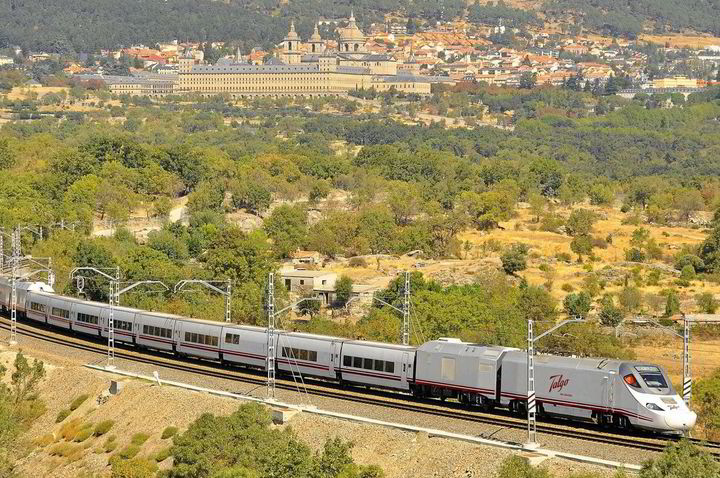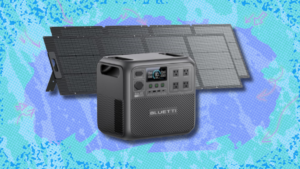Spain funds plan to develop world’s first hydrogen-electric hybrid train capable of speeds of over 250km/h

A plan to retrofit a high-speed tilting train with hydrogen fuel cells and batteries so it can operate on parts of Spain’s rail network without overhead lines has been given the green light after the Spanish government offered a multi-million pound grant supporting the project.
Once built, the train would be the world’s first hydrogen-enabled high-speed train, project developers claim, capable of reaching speeds of up to 250km/h (155mph).
But so far the ten companies behind the so called “Hympulso” project have not revealed if and when the train would enter into commercial operation, or if the H2 fuel cells would be ever be used when the train is travelling at high speeds.
The €6.4m ($7m) granted by Spain’s government as part of the country’s Incentive Programme for Innovation Value Chain and Knowledge of Renewable Hydrogen (under the umbrella of the EU-funded Resilience and Recovery fund) will support the retrofit of the Talgo 250 “all-terrain” train with H2 fuel cells and batteries.
The Talgo 250 has two “technical end cars” containing diesel generators which supply electricity to the propulsion system on sections of rail without overhead lines (also called catenaries).
One of these two cars would be replaced with a car containing hydrogen fuel cells and batteries — although no details have been released on how big these may be.
Article continues below the advert
The Talgo 250 is currently used on Spain’s vast 3,200km high-speed rail network, which is the second largest in the world and capable of accommodating trains travelling at speeds of up to 310km/h.
But the H2-enabled version of the train would also be fitted with an automatic track-gauge change, enabling it to operate on both conventional and high-speed networks, the former of which is less likely to have catenary coverage.
The funding will also support the development of two green hydrogen refuelling stations, comprising a mobile unit built by Spanish oil company Repsol and a stationary supply depot built by H2 vehicle retrofit specialist Golendus.
The train will then be tested by engineering firm Sener, which will also “simulate” the operation of the service.
Under the terms of the two funding calls under the Incentive Programme, totalling €106m, winners must contribute at least €500,000 of investment to each funding award.
Among the companies involved in Hympulso are train-maker Talgo, which is leading the project, Repsol, Golendus and research and development house Tecnalia. Spain’s state-owned rail infrastructure company Adif will also act as an observer on the hydrogen refuelling stations specifically.
Hydrogen Insight reached out to Talgo for more information, but had not received a response at the time of publication.
So far, most hydrogen trains trials have been exclusively on smaller branch and regional lines, which can be difficult or expensive to fit with overhead power lines. However, the use of hydrogen trains even on these networks has had chequered record.
The Frankfurt network which introduced Alstom’s Coradia iLint H2 trains in 2022 has suffered a litany of problems with operating and refuelling the locomotives.
And the German transport authority behind the world’s first hydrogen-only railway line in Lower Saxony decided to buy only battery-electric models in future, citing the costs associated with running H2 trains.
Talgo supplies high speed trains to the Spanish network, as well as to Saudi Arabian operators for the high-speed line between Mecca and Medina. It also supplies high speed trains to operators in Denmark and Germany.






